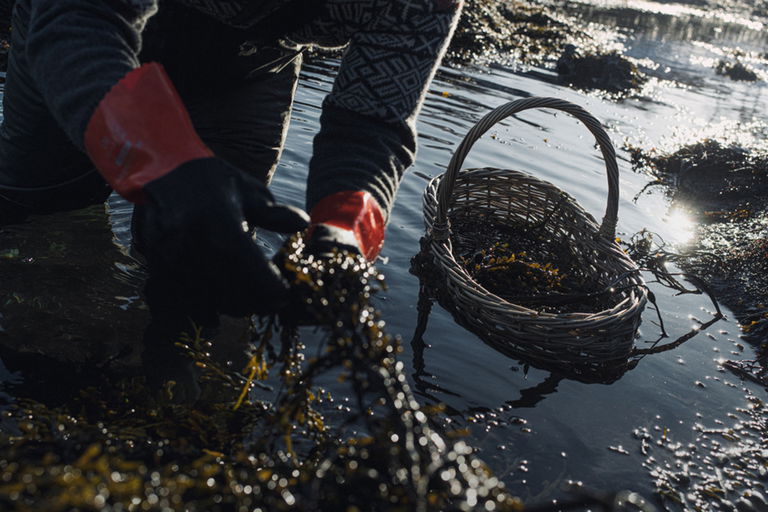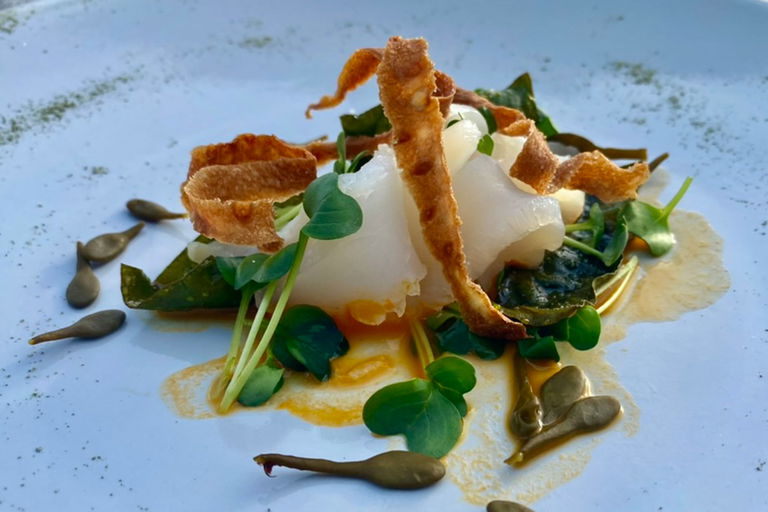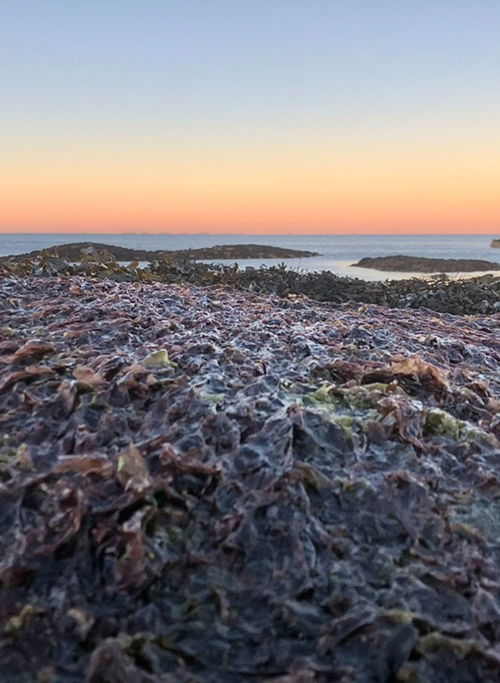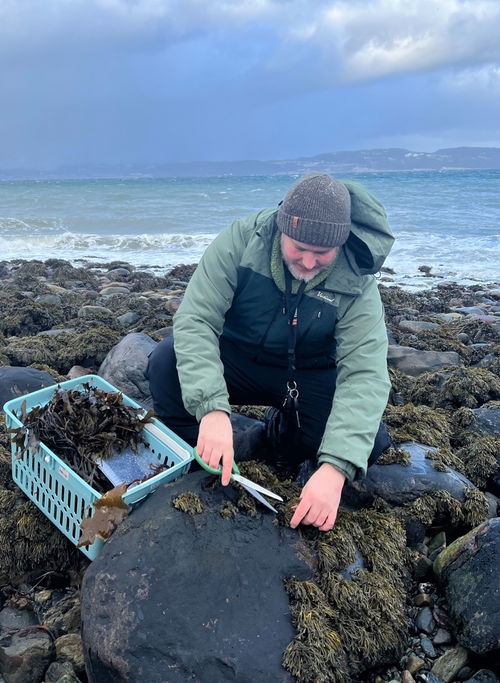Seaweed therapy in Trondheim
The waters off Trondheim in Norway’s Trøndelag region are a treasure trove for fish and shellfish. But the sea also offers plenty of free seaweed, which can be used as a substitute for expensive truffles in cooking. During a foraging trip, forager Jim-Andre Stene explains how seaweed can be used both as an ingredient and as therapy.
The storm whips the wave tops into foam, and snowflakes hail sideways over the beach, striking the eyes like tiny, cold pinpricks. It’s March in Trondheim, and the spring weather is at its most inhospitable. However, the whims of the weather don’t seem to bother forager Jim-Andre Stene, as he gathers the various types of seaweed where the water has receded. Year-round, Jim-Andre Stene and his foragers at Trøndelag Sankeri gather wild plants around Trondheim, where nature is abundant with seaweed species, coastal plants, wild berries from the forest, herbs, and mushrooms. He sells the catch to Trondheim restaurants like Fagn and Speilsalen, as well as top restaurants in Oslo, such as three-starred Maaemo.
"Look, here’s the truffle seaweed," says Jim-Andre Stene, pointing to a stone with seaweed that forms small, crispy tufts with purple and brown hues. The Latin name for the red alga is Polysiphonia lanosa, but it has earned its nickname for a reason, he explains. "When you dry this seaweed, it tastes almost identical to black truffle." Naturally, these properties have made the seaweed sought after by his customers. With this seaweed, they can easily, sustainably, and relatively cheaply add local truffle flavour to their dishes.

Trondheim is Norway's third-largest city and is in the Trøndelag region, which was officially designated as 'European Region of Gastronomy' in 2022 by the IGCAT (International Institute of Gastronomy, Culture, Arts and Tourism) network. The region boasts excellent marine ingredients. Fish and shellfish grow slowly in the cold waters here, and the sea urchins, langoustines, brown crab have an outstanding quality that makes chefs worldwide sigh longingly. Not to mention the scallops off the islands of Hitra and Frøya, where divers descend 25-30 meters to handpick the coveted shellfish.
With seaweed, it's somewhat easier. It just lies there for the taking, and as a flavour enhancer in cooking, not much compares to seaweed. Seaweed is used for the Japanese base stock dashi, which is used as a base in ramen. Kelp, also known as sugar kelp, can be fried, and works well as a sweet and crispy element in desserts, says Jim-Andre Stene. In its dried form, the truffle seaweed has a clear smell and taste of truffle, along with a pronounced bitterness. Like truffle, it should not be eaten on its own, but used as a flavour enhancer. The red tufts genuinely resemble small woolly tufts that attach to other types of seaweed.
"There is really no reason to import truffles from France and Italy when we have the flavour right here," says Jim-Andre Stene. He doesn’t understand why more people do not take advantage of all the flavours and ingredients that can be found in nature just outside their doors.
As humans, we have distanced ourselves from nature as a food producer. Noma has been a great inspiration for what I do. We talk a lot about food waste these days, but the biggest food waste is really all the food that is lost in nature every year.
However, not many years ago that Jim-Andre Stene himself was quite indifferent to both wild food and experiences in nature. His passion for wild ingredients arose late and by chance, but it completely changed his life. In his previous working life, he was in the Norwegian military, and was deployed twice to Afghanistan's Helmand province. There, he worked on securing IT and communication channels. After leaving the military, he became sales manager at a local company, but he missed doing something that made sense on a deeper level.
The solution appeared by chance when he became a father. His wife thought he could be a more present father, and she told him in clear terms to start working on himself. She had read that spending time in nature could be beneficial for the harmony and well-being of families with children, and she thought they should try it out."So, we did. But back then, I found it very boring to be in nature," he says. But in 2015, he joined a chanterelle picking trip and discovered the world of mushrooms. Suddenly, nature made sense. Not long after, he became a certified mushroom expert. "It gave me this sense of mastery. It made sense, and I found it exciting to walk around the forest trying to find rare mushroom species."

Along with his newfound enthusiasm, a business started to grow. In 2018, he began supplying mushrooms and other wild foods to the local restaurant Troll. And since then, things have moved quickly. Today, Trøndelag Sankeri has 16 associated foragers who help during the high season. Many of them are individuals on the fringes of the labour market. Some struggle with PTSD, depression, or ADHD, making it difficult for them to fit into a traditional work environment. But in nature, things are different, says Jim-Andre Stene.
These people gain a sense of mastery that can be hard to achieve in the regular job market. When you're having a tough time, it's nice to think that at least you're good enough to supply Norway's best restaurants.
Don't miss out!
Sign up now for our newsletter.















